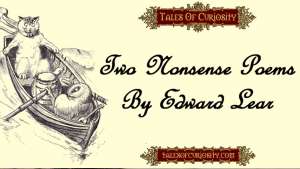| ||||||
| Running Time: | 5:57 | Release Date: | ||||
| This video examines the life and times of Edward Lear. Nowadays Lear is famous for his nonsense poems, especially "The Owl And The Pussy-cat". However, during his lifetime Lear was equally well known for his fine natural history paintings. We also meet his cherished pet, Foss a cat with only half a tail. | ||||||
About The Video |
Edward Lear's Youth |
In 1824, a young boy sat to have his silhouette drawn. He was the twentieth child of a London stockbroker, Jeremiah Lear and his wife Ann. The boy lived with his older sister, who taught him how to write and draw. The young boy's name was Edward Lear.
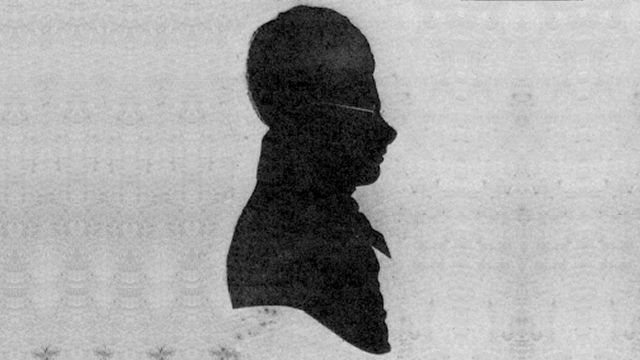
Throughout his life Edward Lear was affected by ill health. He was an epileptic, and also suffered from bouts of depression. He named his epileptic attacks "the Demon", and he called his bouts of depression "the Morbids".
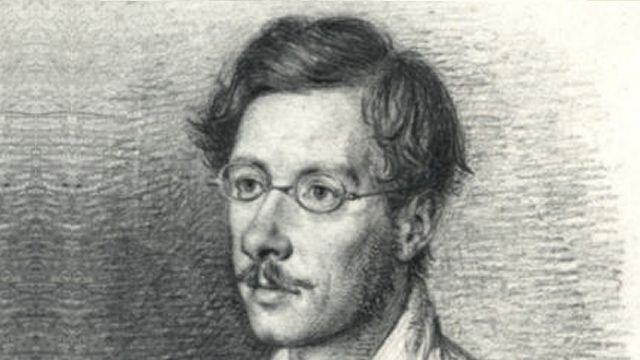
For much of his life Edward Lear traveled widely, to paint and in search of warm weather for his poor health.

Whilst still in his teens Lear earned a living teaching drawing, and selling his own work.
Edward Lear And His Natural History Painting |
In 1830, Edward Lear was given permission by the Zoological Society of London to draw their parrots.
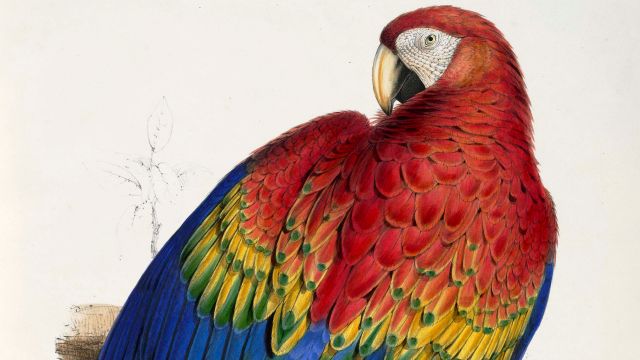
When Edward Lear's illustrations of the parrots were published they were very impressive and well received. Lear had gained a reputation for his natural history work.
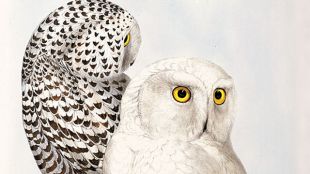
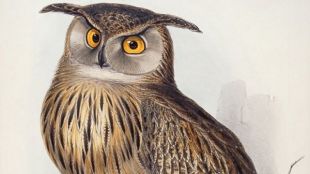
In later years a bird was named in honour of Edward Lear, it was called "Lear's Macaw" (Anodorhynchus Leari).
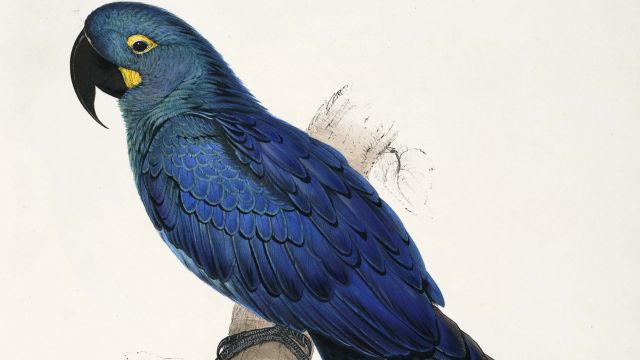
In 1832 Lear was invited to Knowlsey Hall, to draw the zoological collection. This menagerie of animals and birds was very large, with over twenty staff.
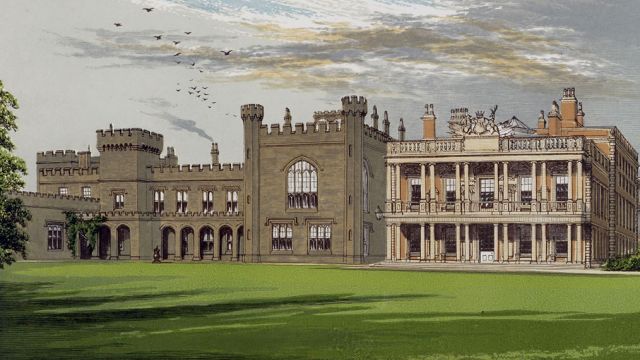
The owner of the collection was Lord Stanley, the 13th Earl of Derby, who was the President of the Zoological Society.
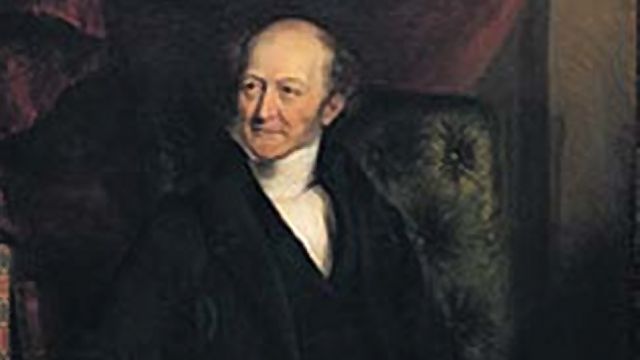
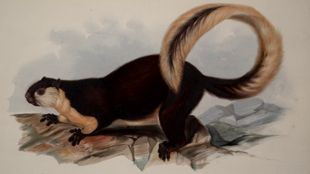
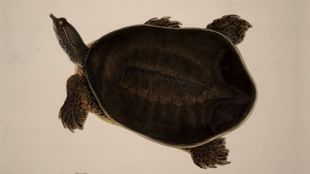
Lear spent four years drawing the animals at Knowlsey Hall. Although he was an employee, he became a frequent guest at family events. Lear's wit impressed Lord Stanley and he was invited to dine with Stanley, his family and friends, rather than the servants. Edward Lear also entertained the children with his humorous poems, jokes and sketches.
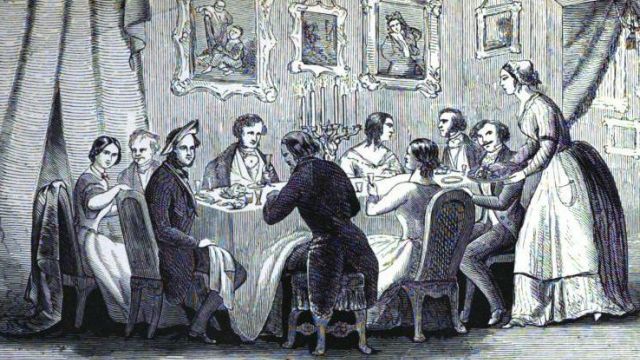
This period at Knowlsey Hall changed Lear's life forever, as he met many people with influence, who would support his work. It also saw the end of his natural history illustrations. The close work that was needed affected both Lear's eyes and also his health. Due to this, Edward Lear decided to start painting landscapes instead.

Edward Lear's "A Book Of Nonsense" |
In 1846, Edward Lear published "A Book Of Nonsense", using the name "Derry Down Derry". Lear dedicated the book to the children of Knowsley Hall.
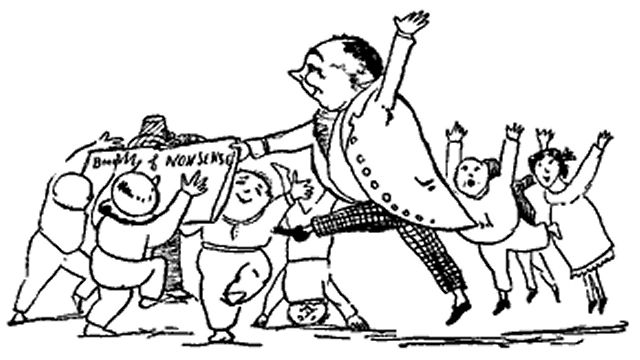
"A Book Of Nonsense" was a collection of limericks. Lear did not invent the limerick, as many people believe, but he popularized the verse form. In fact Lear never used the term limerick, instead he referred to his work as, "nonsense rhymes".
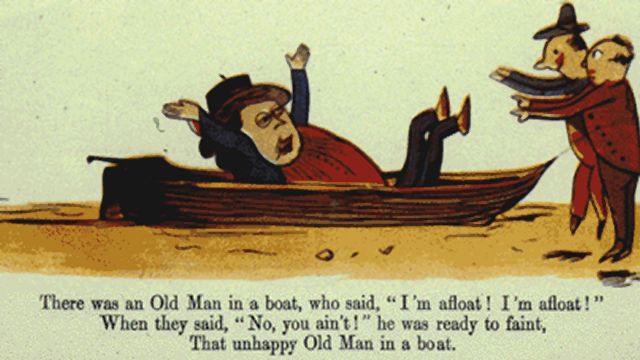
Lear often used the word "runcible" in his poems. Runcible, is a nonsense word that Edward Lear invented, and it does not really mean anything.
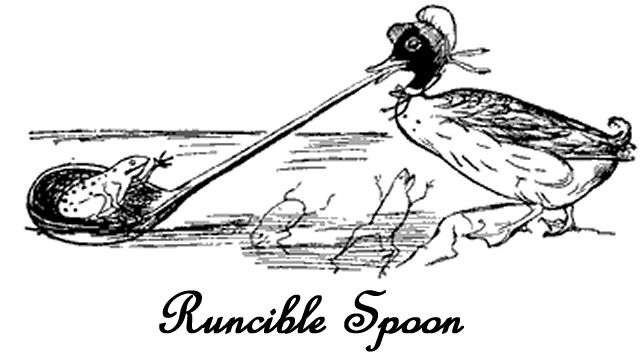
In the same year that "A Book Of Nonsense" was published, 1846, Edward Lear gave the young Queen Victoria twelve drawing lessons.

Lear accidentally caused mayhem by not observing proper court protocol.
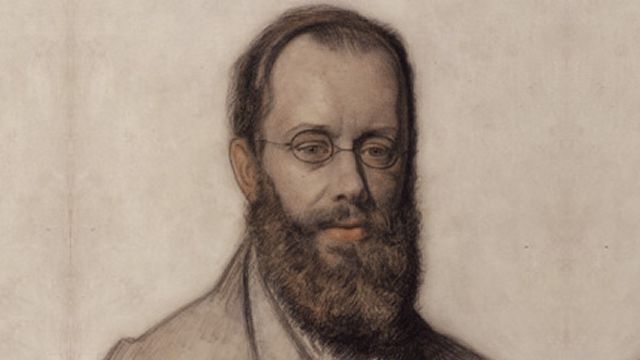
In 1861 "A Book Of Nonsense" was published. This time it appeared under Edward Lear's real name.
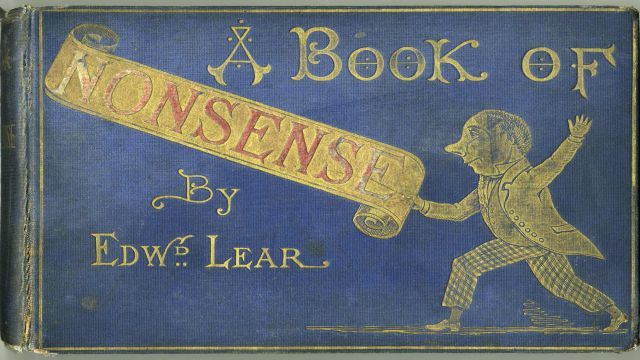
Some people believed that the name "Edward Lear" was another made up name and the author was someone else. The theory was that the author was really Lord Stanley, the 13th Earl of Derby, whose name was also "Edward" and that "Lear" was just an anagram for "Earl". The reason for this was the book's dedication:
TO THE GREAT-GRANDCHILDREN,
GRAND-NEPHEWS, AND GRAND-NIECES
OF EDWARD, 13th EARL OF DERBY,
On one occasion, to prove that the name "Edward Lear" was real and that he was indeed him, Lear had to show a doubter his name written inside his hat.
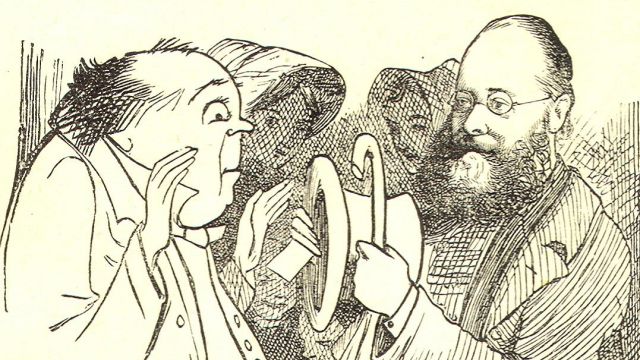
Over the years Edward Lear published other books of nonsense rhymes.
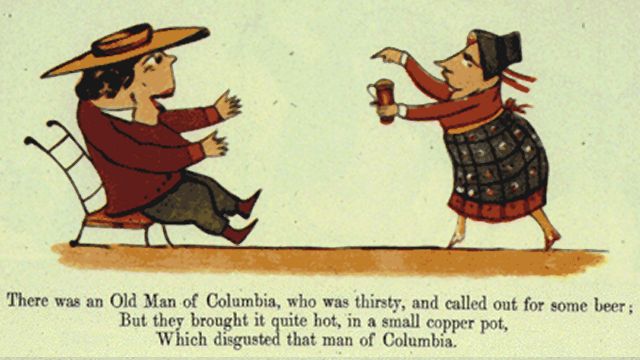
In 1867, Lear wrote his most famous nonsense poem, "The Owl And The Pussycat".
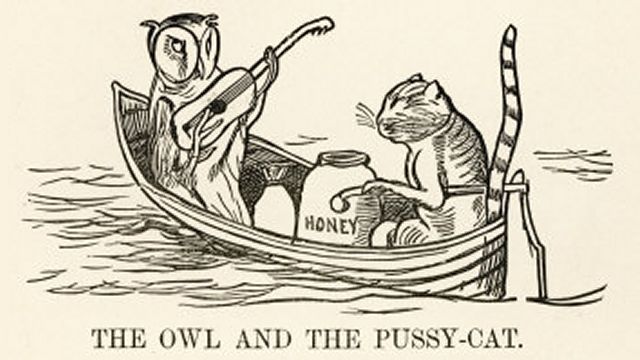
In 1871 Edward Lear settled in San Remo, Italy. With him came his Albanian "servant and friend" Giorgio Cocali, who was his companion for nearly thirty years. After Giorgio Cocali's death his sons would carry on his work for Lear.
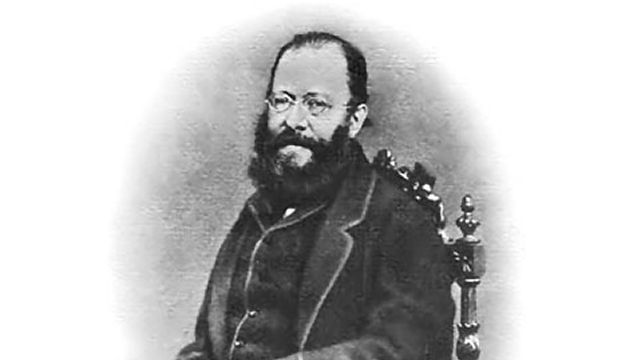
Edward Lear's Cat Foss |
In 1872 there was a new arrival in Edward Lear's life. He was a cat called "Foss".
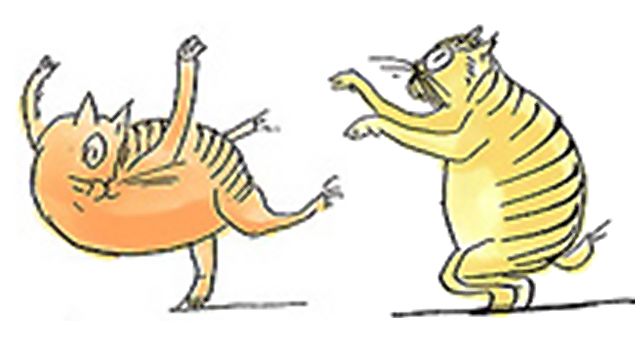
Foss had only half a tail. A servant had cut it off thinking that only having half a tail would would stop Foss from straying.
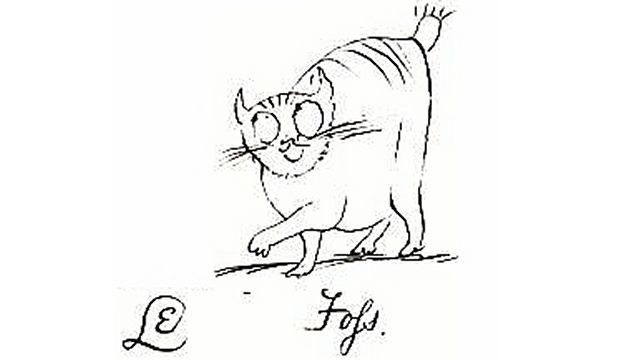
Foss was a large tabby cat with stripes a bit like a tiger. Lear doted on Foss, who apparently was not the most attractive of animals.
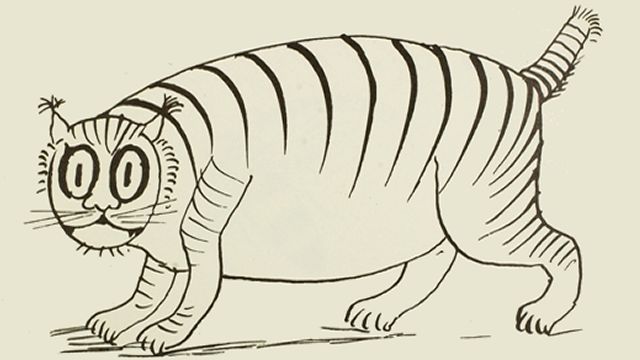
It was said that when Lear built a new house, it was identical to his old one. The reason for this was that Foss would settle in easily. His original house had lost its views after a large hotel was built. This new house was close to the sea, where it was said that "nothing could interrupt his light until the fishes built".
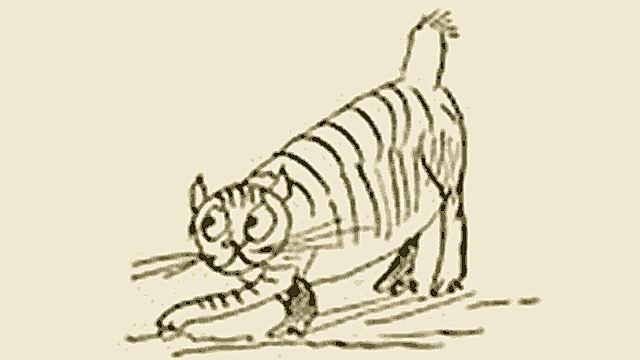
One of Edward Lear's friends was the poet Alfred, Lord Tennyson. He named his new home "Villa Tennyson".
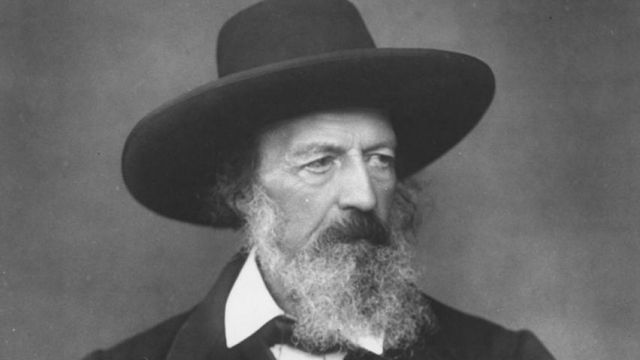
In this their last home Edward Lear and Foss lived a quiet life. Lear became very reclusive and he often hid away from visitors.
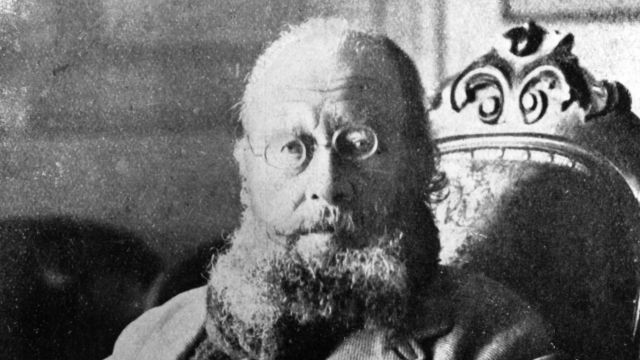
The Death Of Lear And Foss |
On 26th September 1886 Foss died, and after a ceremony he was buried under a tombstone in Edward Lear's garden.
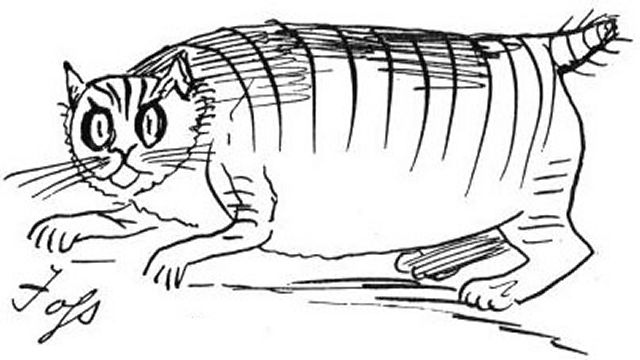
On 29 January 1888, Edward Lear died of heart disease, his health had been in decline for sometime.
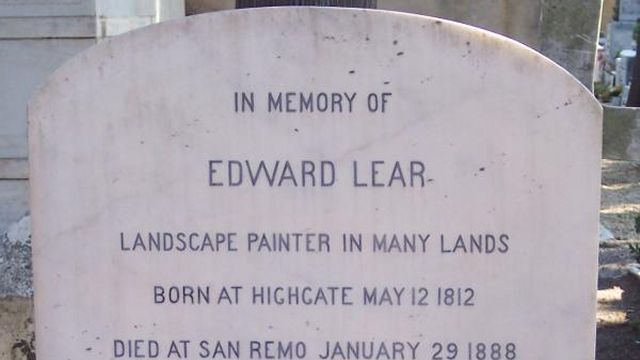
Edward Lear was laid to rest in a simple grave next to a monument to his servant Giorgio Cocali and his son Nicola Cocali's grave.
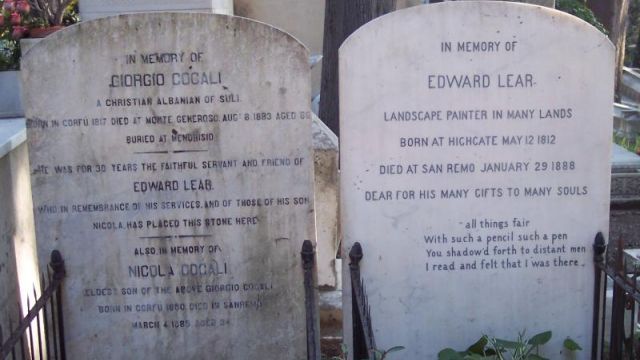
Edward Lear's funeral was a very quiet ceremony, as most of his acquaintances could not attend.
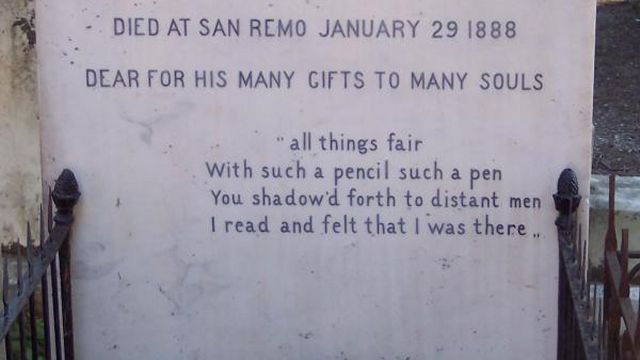
Thus we end our tale, and bid a fond farewell to both Mr Lear and Foss his cat.
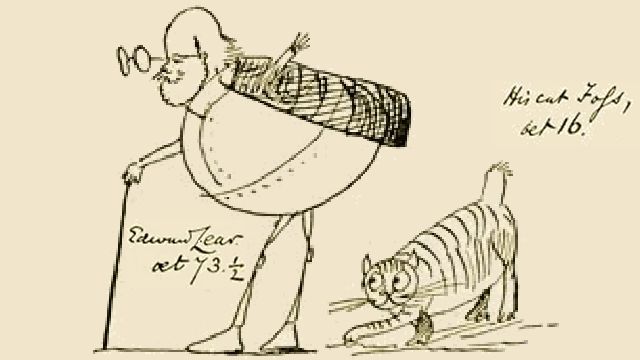
Similar Videos |
Two Nonsense Poems By Edward Lear
Limericks By Edward Lear - Part 1
Limericks By Edward Lear - Part 2
Limericks By Edward Lear - Part 3
Limericks By Edward Lear - Part 4
Limericks By Edward Lear - Part 5
Limericks By Edward Lear - Part 6
More Lear Limericks - Part 1
More Lear Limericks - Part 2
26 Nonsense Rhymes And Pictures
The Duck And The Kangaroo
Calico Pie
Interesting Links |
General |
